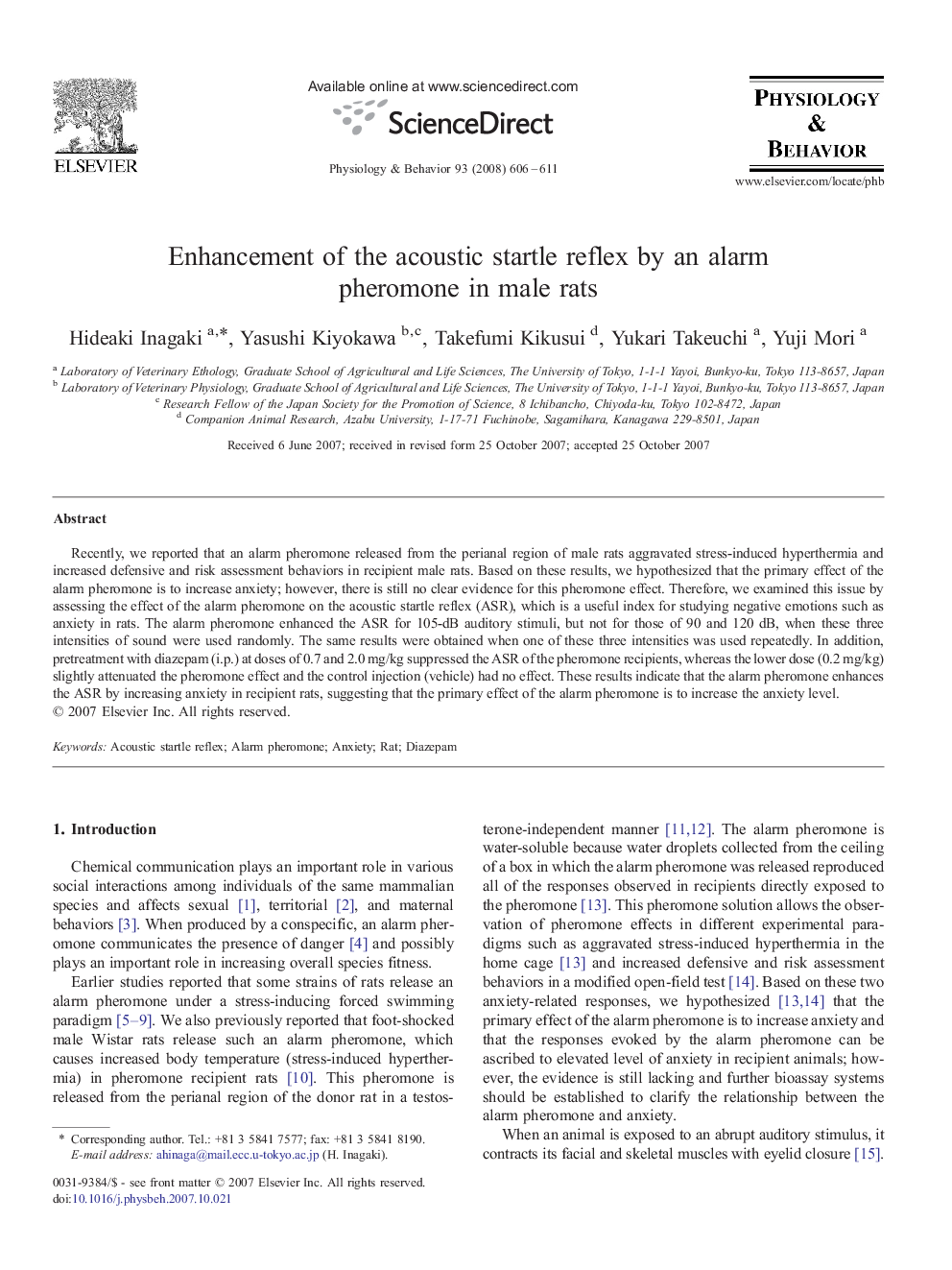| Article ID | Journal | Published Year | Pages | File Type |
|---|---|---|---|---|
| 2845698 | Physiology & Behavior | 2008 | 6 Pages |
Recently, we reported that an alarm pheromone released from the perianal region of male rats aggravated stress-induced hyperthermia and increased defensive and risk assessment behaviors in recipient male rats. Based on these results, we hypothesized that the primary effect of the alarm pheromone is to increase anxiety; however, there is still no clear evidence for this pheromone effect. Therefore, we examined this issue by assessing the effect of the alarm pheromone on the acoustic startle reflex (ASR), which is a useful index for studying negative emotions such as anxiety in rats. The alarm pheromone enhanced the ASR for 105-dB auditory stimuli, but not for those of 90 and 120 dB, when these three intensities of sound were used randomly. The same results were obtained when one of these three intensities was used repeatedly. In addition, pretreatment with diazepam (i.p.) at doses of 0.7 and 2.0 mg/kg suppressed the ASR of the pheromone recipients, whereas the lower dose (0.2 mg/kg) slightly attenuated the pheromone effect and the control injection (vehicle) had no effect. These results indicate that the alarm pheromone enhances the ASR by increasing anxiety in recipient rats, suggesting that the primary effect of the alarm pheromone is to increase the anxiety level.
